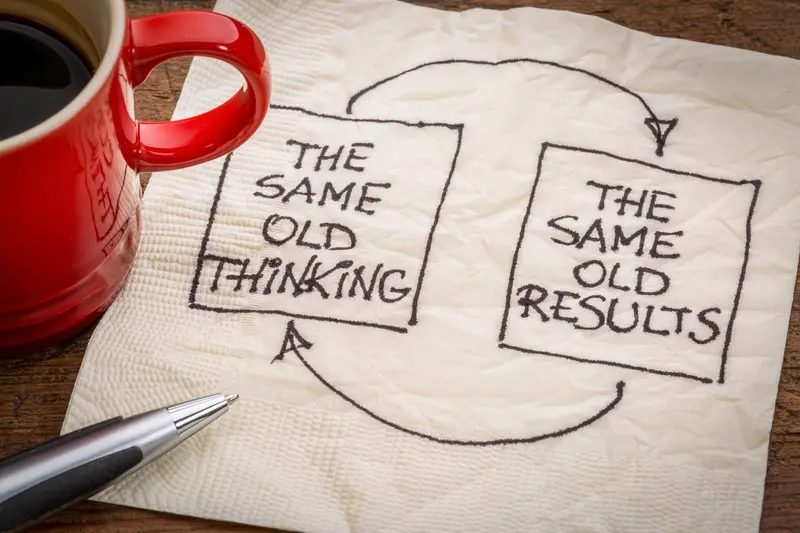Why Do Some Business Apps Feel Like Games and Others Don't?
Business apps have a bit of a reputation problem, don't they? Open your banking app and it feels like doing homework. Switch to something like Duolingo or even LinkedIn these days, and suddenly you're earning points, unlocking achievements, and actually wanting to come back for more.
I've been building apps for businesses of all sizes for years now, and one question keeps coming up in client meetings: why do some apps feel engaging while others feel like a chore? The answer isn't as simple as slapping some badges on your interface and calling it done. It's about understanding what makes people tick and how game-like apps tap into our natural desire for progress and achievement.
The difference between an app that gets used once and forgotten versus one that becomes part of someone's daily routine often comes down to how it makes users feel. Good game-like apps don't just gamify for the sake of it—they use psychological principles that make mundane tasks feel rewarding. Bad ones? Well, they end up feeling gimmicky and annoying.
The best business apps don't feel like games because they have points and badges—they feel like games because they understand human motivation
What's interesting is that adding game-like features to business apps isn't really about making them more fun (though that can be a nice side effect). It's about creating better user experiences that keep people engaged with your product. When done right, these features can transform how users interact with everything from fitness tracking to project management tools. When done wrong? You end up with confused users and abandoned downloads.
What Makes Apps Addictive
Right, let's get straight to the point—some apps just hook you in a way that others don't. And it's not by accident. After building apps for years, I've seen exactly what separates the apps people check constantly from the ones they forget about after a week.
The secret isn't magic; it's psychology mixed with smart design choices. Apps become addictive when they trigger specific responses in our brains that make us want to come back for more. Think about how you feel when you get a notification, complete a task, or unlock something new—there's a little hit of satisfaction there, right?
The Core Elements That Hook Users
Every addictive app I've studied uses these same building blocks. They might package them differently, but the fundamentals are always there:
- Variable rewards that you can't predict
- Progress bars and completion metres
- Social elements that connect you with others
- Personalisation that makes the app feel like it's made just for you
- Small friction points that make achievements feel earned
- Time-based elements that create urgency
Here's what's interesting though—business apps often ignore these principles completely. They focus on features and functionality but forget that humans are emotional creatures who respond to the same triggers whether they're playing a game or managing their expenses.
The apps that feel addictive aren't necessarily better at their core function. They're just better at making you feel good about using them. A fitness app that celebrates your daily walk with confetti and unlocks new features is doing the same job as a boring step counter—but which one are you more likely to open tomorrow?
The key is understanding that addiction in apps isn't about creating dependency; it's about creating genuine engagement that benefits both the user and the business.
The Psychology Behind Game-Like Features
Right, let's talk about what's actually happening in people's brains when they use game-like apps. It's not magic—there's proper science behind why some business apps feel sticky while others get deleted after a few days.
The biggest player here is something called dopamine. Now, dopamine isn't just a "feel good" chemical like people think; it's actually about anticipation and reward prediction. When users expect something good might happen—like completing a task and seeing a progress bar fill up—their brains release dopamine. That's the hook right there.
I've seen this work brilliantly in fitness apps that use streaks. Users don't just want to exercise; they desperately don't want to break their streak. It becomes almost painful to skip a day because they've invested so much mental energy in maintaining it. That's loss aversion at work—people hate losing things they already have more than they like gaining new things.
The most effective game-like features tap into existing human behaviours rather than trying to create new ones. Build on what people already do naturally.
Another powerful psychological trigger is what we call variable ratio reinforcement. Basically, if rewards come at unpredictable intervals, people become more engaged than if they know exactly when they'll get rewarded. Think about why people refresh their social media feeds constantly—they never know when they'll see something interesting.
Key Psychological Triggers
- Progress visualisation (completion bias makes us finish started tasks)
- Social proof (seeing others succeed motivates participation)
- Achievement recognition (public badges satisfy our status needs)
- Scarcity and urgency (limited-time offers create immediate action)
- Personal investment (the more effort users put in, the more committed they become)
The thing is, these psychological principles work because they're based on fundamental human nature, not because they're trendy. When business apps ignore this psychology, they're fighting against millions of years of evolution. That's a battle you're not going to win.
Right, let's get practical about this. You don't need to rebuild your entire business app from scratch to make it more engaging—honestly, some of the most effective changes are surprisingly simple.
First up: progress bars. I know, I know, they sound boring but hear me out. When users complete their profile, finish a training module, or work through a workflow, show them exactly how far they've come. There's something genuinely satisfying about watching that bar fill up. It taps into our need for completion without being gimmicky.
Small Wins, Big Impact
Micro-interactions are where the magic happens. When someone submits a form, don't just show a boring "Success" message. Add a little animation, maybe a gentle bounce or a tick that appears with a soft sound. These tiny moments of delight accumulate over time; they make your app feel more responsive and, well, alive.
Streaks work brilliantly for business apps too. If your app involves daily tasks—logging expenses, completing safety checks, updating project status—keep track of consecutive days. People will genuinely go out of their way to maintain a streak once they've built one up. It's a bit mad really, but it works.
Recognition Without the Fluff
Achievement systems don't have to be childish. Instead of cartoon badges, think about meaningful recognition. "Completed 50 client onboardings" or "Processed £100k in invoices this month"—these feel professional but still give that little dopamine hit when they pop up.
The key is subtlety. You're not building a game; you're adding game-like elements that enhance the experience rather than distract from it. When done right, users might not even notice these features consciously—they'll just find your app more pleasant to use than the competition.
Reward Systems That Actually Work
Here's the thing about rewards in business apps—most companies get this completely wrong. They think slapping a few points on user actions will magically transform their boring expense tracker into something people actually want to use. But it's not that simple, and honestly, it shows.
The rewards that work aren't the flashy ones you'd expect. I've seen apps succeed with the simplest systems: a completion tick that feels satisfying to press, a streak counter that shows how many days someone's logged their expenses, or a progress bar that fills up as they complete their monthly tasks. These tiny moments of recognition tap into something much deeper than fancy badge collections.
Variable Rewards Drive Real Engagement
The most effective reward systems I've built use variable schedules—users don't always know when they'll get recognised for their efforts. A finance app might celebrate when someone saves an unexpected amount, or a project management tool could highlight when a team completes work ahead of schedule. These unpredictable moments create genuine excitement.
The best business apps make users feel accomplished about tasks they'd normally find tedious
But here's what really matters: the reward has to connect directly to real-world value. Points for uploading receipts only work if users understand how this helps them track spending or claim expenses. A leaderboard showing top performers makes sense if workplace culture supports that kind of competition. Otherwise, you're just adding digital clutter to someone's already busy day. The goal isn't to trick people into using your app—it's to help them feel good about the productive things they're already trying to do.
When Gaming Features Go Wrong
I've seen plenty of apps try to add game-like features and completely miss the mark. It's a bit mad really—what sounds brilliant in a meeting room can turn into a user experience nightmare when you actually build it.
The biggest mistake I see is when businesses add points and badges without thinking about why users would care. Your expense tracking app doesn't need a "Coffee Purchase Champion" badge, honestly. It just feels patronising and gets in the way of what people actually want to do—track their spending quickly and move on with their day.
The Most Common Mistakes
Here's what goes wrong most often when companies try to gamify their business apps:
- Adding meaningless points that don't connect to real value
- Forcing users through unnecessary steps just to create "engagement"
- Over-complicating simple tasks with too many game elements
- Creating competitive features when users just want to get work done
- Using childish rewards for serious professional tools
- Making gaming features mandatory instead of optional
The key thing to remember is that your users came to solve a problem, not play a game. If your gaming features get in the way of that primary goal, they'll backfire badly. I've worked with clients who spent months building elaborate point systems only to have users complain they couldn't find basic functions anymore.
But here's the thing—when you get it right, gaming features can genuinely make boring tasks more enjoyable. The trick is keeping them subtle and making sure they enhance the core experience rather than replacing it. Your app should work perfectly even if someone completely ignores all the game-like elements you've added.
Real Examples of Success and Failure
Let me share some real stories from the apps I've worked on and studied over the years. Because honestly, seeing what actually works (and what spectacularly doesn't) teaches you more than any theory ever could.
LinkedIn's approach to gamification is bloody brilliant, even if most people don't realise it. They don't have flashy badges or points systems, but they've mastered something much more powerful—social validation. Every time you complete your profile, they show you a percentage bar that fills up. It's simple, but it works because it taps into our need for completion. Plus, seeing "You appeared in 47 searches this week" gives you that little dopamine hit without feeling childish.
When Gaming Goes Horribly Wrong
I once worked with a client who wanted to add a "streak" system to their expense reporting app. Sounds reasonable, right? Wrong. Employees started submitting fake expenses just to maintain their streaks. The finance team was furious, and we had to remove the feature within a month. The lesson? Gaming features need to align with your actual business goals, not work against them.
The Quiet Winners
Some of the most successful game-like business apps are the ones that don't scream about it. Take Slack's use of emoji reactions and custom status updates. These tiny social elements make work communication feel more human and engaging. Or Duolingo for Business, which took their consumer gamification and adapted it perfectly for corporate language learning—keeping the progress tracking but removing the competitive pressure that might stress employees.
Study apps your target users already love, but don't copy their gaming features directly. Instead, understand why those features work and adapt the underlying psychology to fit your business context.
The apps that fail usually make one of two mistakes: they either go overboard with gaming elements that feel forced, or they add them as an afterthought without considering how they fit into the user's actual workflow.
Building Your First Game-Like Business App
Right, let's get practical. You've read about the psychology, seen the examples, and now you're thinking "how do I actually build this stuff?" The good news is you don't need to create the next Candy Crush—you just need to make your business app feel less like work and more like something people genuinely want to use.
Start with your core function. What's the main thing your app does? Let's say its a productivity app for tracking tasks. Instead of a boring checklist, think about how you can make completing tasks feel rewarding. A simple progress bar that fills up as people complete their daily goals? That works. A streak counter showing how many days in a row they've hit their targets? Even better.
Essential Features to Include
Here's what I always recommend for first-time builders looking to add gaming elements:
- Progress indicators that actually mean something to users
- Achievement badges for meaningful milestones
- A simple points or scoring system
- Gentle streak counters (not punishing when broken)
- Visual feedback for completed actions
- Optional challenges or mini-goals
The key word there is "optional"—never force gaming features on users who just want to get stuff done. I've seen too many apps fail because they made the gamification mandatory rather than an enhancement.
Common Mistakes to Avoid
Don't overcomplicate it. Your first version should have maybe two or three game-like elements, not fifteen. I've worked with clients who wanted every bell and whistle from day one, and it always backfires. Users get overwhelmed and the core functionality gets lost in all the noise.
Test with real users early and often. What feels motivating to you might feel patronising to your actual users—and that's a hard lesson to learn after you've built everything.
Conclusion
After eight years of building apps that people actually want to use, I've learned that the difference between game-like apps and boring business tools isn't about adding badges or points—it's about understanding what makes people tick. The most successful business apps I've developed don't feel like games because they copy gaming mechanics; they feel engaging because they respect users' time and make complex tasks feel manageable.
You know what? Some of the best business apps I've worked on barely look like games at all. They just happen to follow the same principles that make games compelling: clear feedback, logical progression, and that lovely feeling of getting better at something over time. It's not rocket science, but it does require thinking about your users as human beings rather than just... well, users.
The biggest mistake I see companies make is adding gamification as an afterthought—like putting a cherry on top of a soggy cake and hoping it'll taste better. Game-like features work when they're baked into the core experience from day one, when they solve real problems rather than just trying to make boring tasks feel fun.
If you're thinking about making your business app more engaging, start small. Focus on one area where users get stuck or lose interest, then ask yourself: how would a good game handle this? The answer usually isn't points or leaderboards—it's clearer communication, better feedback, or breaking big scary tasks into smaller, more manageable chunks. That's what makes the difference between apps people use because they have to and apps they actually enjoy using.
Share this
Subscribe To Our Learning Centre
You May Also Like
These Related Guides

Why Do Most Social Media Apps Fail?

Why Do 90% Of Apps Fail The Psychology Behind App Success?



